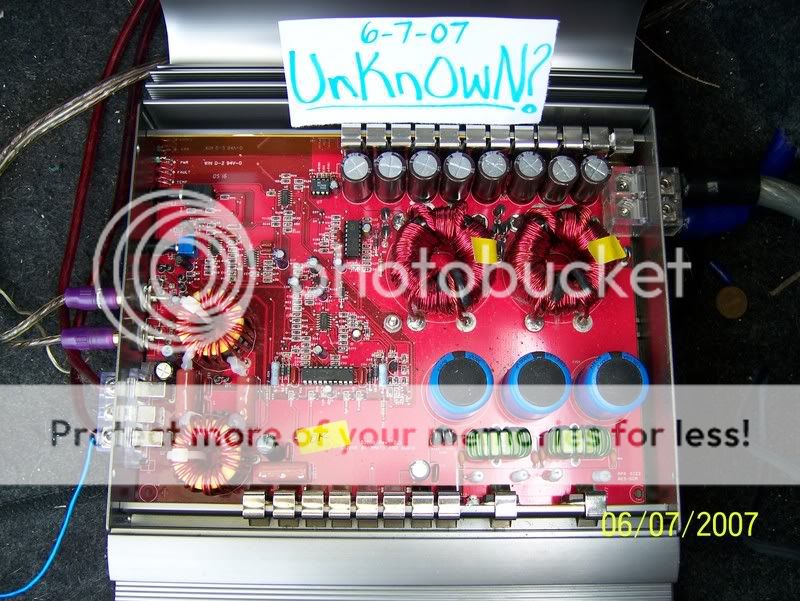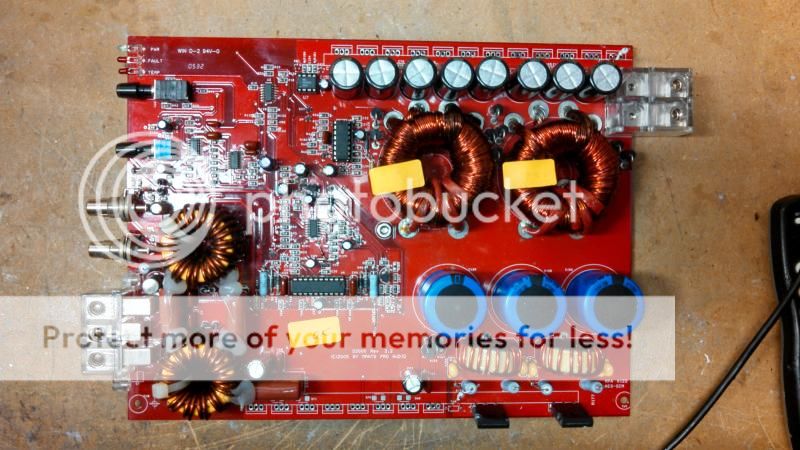Ok, this may be a stupid question, but I've always wondered why MMATS and some other companies have the same "model" amp, but rated at different ohm load capabilitys. So for example they have a 2000.05 (1/2 ohm stable), 2000.1 (1-ohm) and 2000.2 (2-ohm)
What are they changing in the amplifier to get the different load capability?? Wouldnt it have to be a TOTALLY different amp? If the load rating goes down, then wouldnt the power go up? So do they reduce the voltage produced by the power supply to maintain the same power? If so, why would'nt they just leave it the same an call it a 3000 watt, or 4000 watt etc amp??
Wouldnt a 4000.05 technically be the same thing as say a 2000.1??
Sorry if Im being totally confusing. lol
It appears they use the same board for all of a given model (IE 2000.05, 2000.1, 2000.2) because the board just says "D2000". Without specifying a load rating. So what is the deal here. What are they changing inside?
Again, this is probably a REALLY stupid question, its just weird to me that they do things this way.
What are they changing in the amplifier to get the different load capability?? Wouldnt it have to be a TOTALLY different amp? If the load rating goes down, then wouldnt the power go up? So do they reduce the voltage produced by the power supply to maintain the same power? If so, why would'nt they just leave it the same an call it a 3000 watt, or 4000 watt etc amp??
Wouldnt a 4000.05 technically be the same thing as say a 2000.1??
Sorry if Im being totally confusing. lol
It appears they use the same board for all of a given model (IE 2000.05, 2000.1, 2000.2) because the board just says "D2000". Without specifying a load rating. So what is the deal here. What are they changing inside?
Again, this is probably a REALLY stupid question, its just weird to me that they do things this way.
Last edited:
Given an amplifier circuit, it will dissipate more power as the Rload decreases. i.e. 2 ohm will have double the power than 4 ohm, 4ohm double the power than 8 ohm, 8 ohm double the power than 16 ohm.
But if Rload is lowered, the transistors/mosfets in the amplifier's output section may exceed it's SOA (Safe Operating Area) i.e. more power dissipated/more heat/more current which may exceed the transistor's/mosfets power rating.
So to allow more power dissipation, and lower Rload, what manufacturers do is usually parallel several transistors/mosfets in the output section. That way, power dissipation is distributed and shared among several output sections, ensuring each section is still within it's safe operating area.
So the amplifiers may share the same front end and driver circuitry, and the only difference is more paralleled output section on the higher wattage models. For example: Crown amplifiers model XLS 202, 402, 602, etc... it's the same circuitry. Only difference is the 402 and 602 models have more output stages in parallel.
But if Rload is lowered, the transistors/mosfets in the amplifier's output section may exceed it's SOA (Safe Operating Area) i.e. more power dissipated/more heat/more current which may exceed the transistor's/mosfets power rating.
So to allow more power dissipation, and lower Rload, what manufacturers do is usually parallel several transistors/mosfets in the output section. That way, power dissipation is distributed and shared among several output sections, ensuring each section is still within it's safe operating area.
So the amplifiers may share the same front end and driver circuitry, and the only difference is more paralleled output section on the higher wattage models. For example: Crown amplifiers model XLS 202, 402, 602, etc... it's the same circuitry. Only difference is the 402 and 602 models have more output stages in parallel.
Like I said though, it appears they use the same number of outputs and same board in all models of the same wattage rating.
Here is a picture of the guts from a D2000.05

And although I have all the FETs out, here is my D2000.2 You can see they are essentially the same, same number of PS FETs, same number of output FETs.

So what the heck is going on here?
Here is a picture of the guts from a D2000.05

And although I have all the FETs out, here is my D2000.2 You can see they are essentially the same, same number of PS FETs, same number of output FETs.

So what the heck is going on here?
Only obvious differences I see is possibly different torroids. They have stickers with ratings on them so I assume they have a bunch of different ones for a reason.
And also the .05 has an extra current sense resistor that my .2 does not. Mine has the spot for it, but nothing there.
And also the .05 has an extra current sense resistor that my .2 does not. Mine has the spot for it, but nothing there.
At it's simplest, P = V^2/R ; where R is 2,4, or 8 ohm, and V is output voltage
Lower the R, you increase power and vice versa.
Increase V, you increase power and vice versa.
The caveat is the increase in power dissipated doesn't exceed the power rating of the output stage, or go outside the safe operating area.
Lower the R, you increase power and vice versa.
Increase V, you increase power and vice versa.
The caveat is the increase in power dissipated doesn't exceed the power rating of the output stage, or go outside the safe operating area.
- Status
- This old topic is closed. If you want to reopen this topic, contact a moderator using the "Report Post" button.
- Home
- General Interest
- Car Audio
- Noob Question? - Different load ratings for same amp?